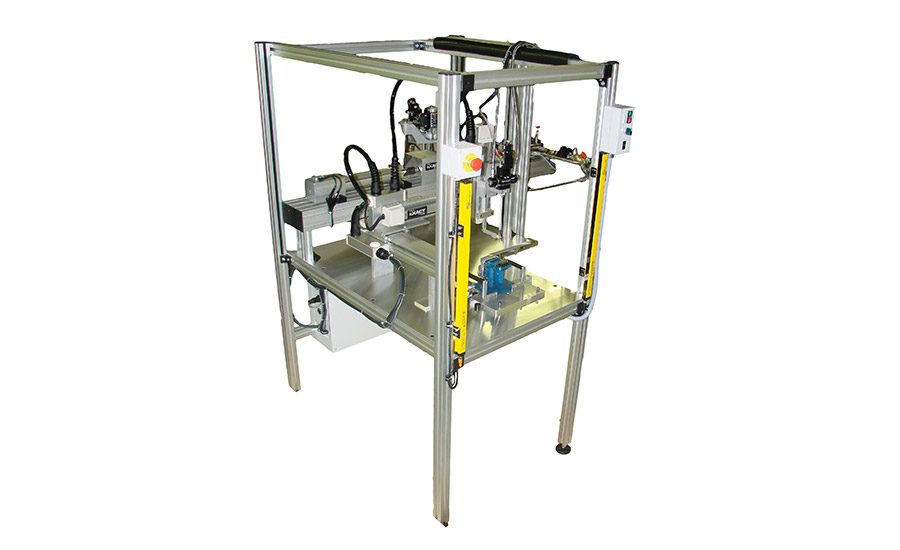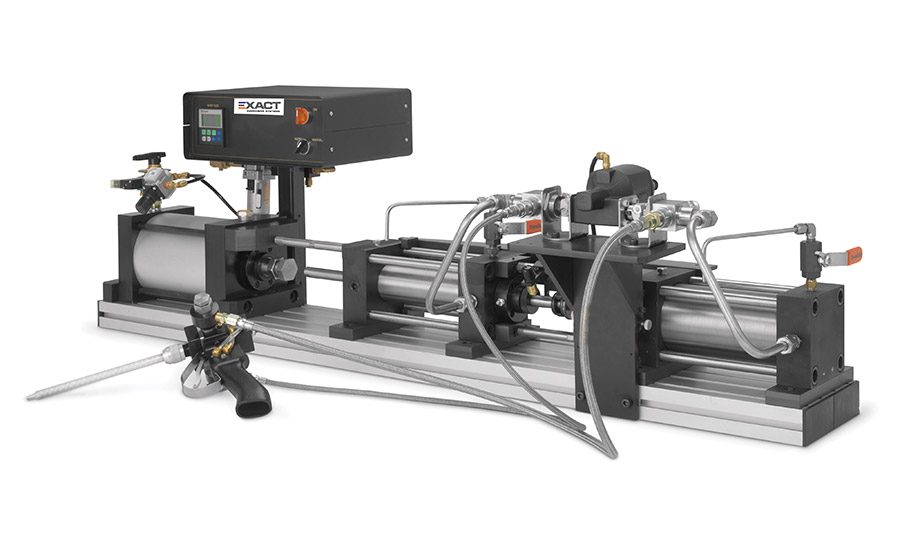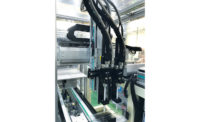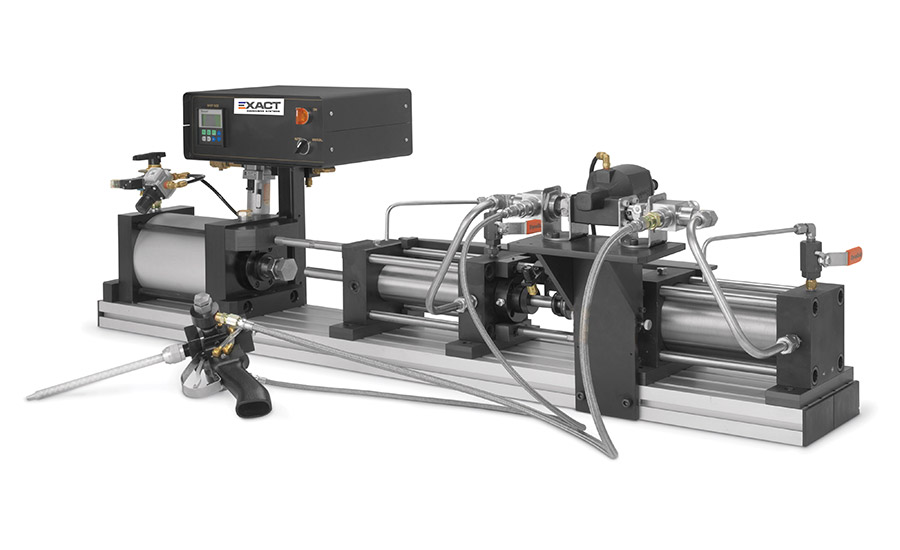All Adhesive and Sealant Meter/Mix Systems Are Not Created Equal
Meter/mix systems vary immensely from application to application.






Meter/mix systems vary immensely from application to application. Adhesive or sealant resin formulations can vary as well—by chemistry, viscosity, filler content, handling time, and moisture sensitivity, as well as other critical performance factors engineered by the material supplier. If a meter/mix system is chosen simply based on the mix ratio capability of the system, it will likely to fall short on capability to meet the application and production needs. Following are some key points to consider when choosing meter/mix equipment.
Formulation and Application Considerations
Urethanes, epoxies and silicones can be formulated to provide specific properties that customers need for the products they are producing. Some products require durability or face exposure properties. Moreover, sometimes simply thwarting the prospect of reverse engineering can be a design requirement. The goal in many cases can be summed up in one word: protection.
These aspects require specific properties within the resin formulation that can be challenging to the dispensing equipment manufacturer. Chemical compatibility, abrasive filler, wide ranges of viscosities, etc., are all critical elements that must be considered before an application solution can be offered.
With the chemistry understood, the next step is to clearly define what the application should accomplish. Different products and processes can require varying amounts of material dispensed. Using either a too-robust or an inadequate system can be extremely costly, causing lost production and downtime due to equipment failure. An “off-the-shelf” solution typically leads to these problems.
Specific Solutions
Meter/mix suppliers can help design the right system solution for the process. Discussing your application with a meter/mix engineering team ensures that the system offered will provide the best solution. The system, including its hydraulic circuits, will be sized to provide the best balance of internal pressures and balanced flow. This attention to engineering detail ensures minimal wear and longevity to meet the long-term application requirements.
The meter/mix system manufacturer encounters countless differing applications, virtually all of which have some key differences. These differences can all affect the final system design and implementation.
Base equipment options for meter/mix systems include servo-driven precision, piston metering, gear pumps and rod displacement. In addition, how the resin is supplied can vary. Some resins are supplied in cartridges or quarts, while others may come in drums or tote-sized containers. Decisions regarding the need for agitation, vacuum degassing, nitrogen blanketing, high-flow dispense heads, hand-held dispense options, motion platforms, heating and recirculation, and numerous others should be discussed during the pre-quote phase in order to offer the best and most long-lasting system solution.
Chemical compatibility is always a concern—but it doesn’t stop there. Composition of wear components, including seals, rods, pistons, gears, etc., must be considered. Sensitivity to moisture, light (UV), oxygen, etc. requires safeguards or peripherals to prevent adverse reactions. Wide ratios or vast differences in viscosity are qualities that contribute to design considerations. Linear style systems are better options than parallel positioned cylinders that can “rack,” causing fluctuation in ratio and added wear.
Vacuum Degassing Requirements
How critical is your final materials dispense quality to your process? What if the formulation has micro-bubbles of air/gas? The quality of your final product and the operational aspect of your metering system require that the material be hydraulically solid and void of any air or gas. The presence of air or gas in a metering system is similar to having air in a car’s brake lines; the compressibility or expandability affects the performance of stopping the vehicle.
In a metering system, this condition becomes compounded due to the plural fluid circuits. The goal is to provide a precise volumetric ratio but, with compression or expansion within one or both circuits, it is virtually impossible to maintain a specified ratio. The steps to avoid this are simple but not always available in lesser-engineered offerings. Vacuum degassing can typically be done before the material enters the metering system.
If your product has a tendency to entrap air during the dispensing process, or its performance requires that it be void or bubble free, heat zones or fully enclosed heated systems will aid in reducing the viscosity in order to allow the formulation to flow more readily in and around the complexities. In more critical circumstances, the capability to dispense while “under vacuum” may be required. This process uses a vacuum chamber that creates a vacuum environment to remove the air and allows the dispensing of metered formulation onto or into your product.
Match the System Size to Usage and Product
Production systems come in all sizes and configurations. A meter/mix vendor can provide a solution sized with the appropriate supply reservoirs so that production is not interrupted. In addition, the system can ensure that the appropriate material turnover occurs to avoid shelf life issues.
High and low are relative terms when it comes to describing production volume levels. A small cartridge dispensing system may easily meet production levels to some but would poorly support an industrial application, such as filters or motor stator encapsulation.
Cartridges, tanks, drums and totes are a few supply options that are chosen based on various considerations relative to chemistry, filler, moisture, etc. A meter/mix supplier should provide you with a system tailored to your specific needs.
It all starts with communication. Your vendor and their engineers should be eager to discuss your needs and work with you to provide the best solution relative to all the facets of your application. There is a lot to consider but, in the long run, it’s worth it.
For more information, contact the author at (207) 563-2299 or sales@exactdispensing.com, or visit www.exactdispensing.com.
Looking for a reprint of this article?
From high-res PDFs to custom plaques, order your copy today!











